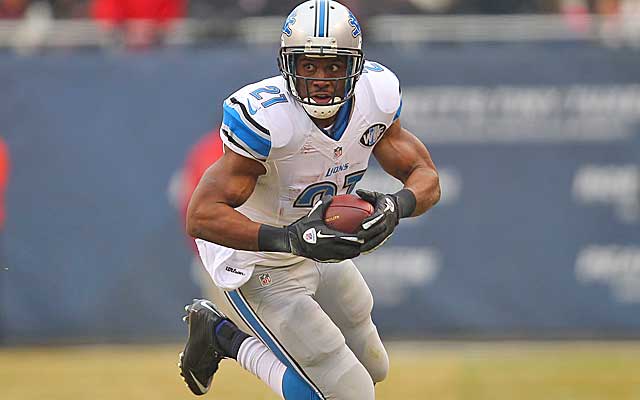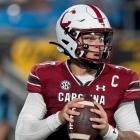The release of NFL veterans seemed to come in waves last week as teams trimmed what they consider roster fat -- players not worth the contracts they are being paid.
When players sign contacts, they usually are announced as four or five-year deals. The reality is they are two-year deals. If, after two years, a player doesn't show he's worth big money, they will be sent packing.
These so-called street free agents, free to sign with any team prior to the open of the free-agent period March 10, can get a jump start on landing with a team before the glut of players hits the market.
That can be a big advantage. Defensive lineman Ricky Jean-Francois, who was released by the Indianapolis Colts last week, quickly signed a deal with the Washington Redskins. The Redskins then released Barry Cofield and Chris Canty, two veteran linemen, who are now in the market.
This is one of my favorite NFL sayings: Old and slow making too much dough means you have to go. It applies at this time of the year more than ever.
That's the cruel reality of the NFL. It doesn't mean some of these players released aren't capable of still helping other teams -- and even starting. It means they are slowing down and their salaries were too great for the production.
Here are some intriguing veterans who are street free agents:
WR Brian Hartline: After six years with the Dolphins, Hartline was sent packing. He signed a five-year deal in 2013, but he was set to count $7.8 million against the cap. That's way too big a number for a receiver who had 39 catches for 474 yards last season. Hartline would fit in as a possession receiver for a team with speed elsewhere. The Browns, in desperate need of receiver help, should give him a look for the right price.
G/T Todd Herremans: The Eagles saved $2.9 million by releasing Herremans, who turns 33 this year. He has started at guard and tackle, and there's value in that. He is good as a run blocker, but has struggled at times in pass protection. A team with a lot of young linemen -- like the Jaguars -- could bring in a player like Herremans to toughen up their locker room and add competition.
DT Darnell Dockett: Once a Pro Bowl player, he missed last season with a torn ACL. The Cardinals cut him to save $6.8 million in cap room. He is 33, but the Cardinals would like him back at a reduced rate. If not, he already has said he will be the comeback player of the year. I think he has a year or so left as a rotation player.

G Justin Blalock: The Falcons saved nearly $4 million in cap room by releasing the eight-year veteran. He is a power blocker who doesn't fit the new zone scheme the Falcons will implement under new coordinator Kyle Shanahan. For a team looking for a power guard, Blalock would fit. He is a solid player, not a top-level player. He has made 125 starts.
DE/OLB Mathias Kiwanuka: He turns 32 this year and finished the 2014 season on IR (knee). The Giants saved $4.8 million by releasing him. He has played both defensive end and linebacker for the Giants, but he could fit best as a situational 4-3 end for a team that might need depth. His days as a big-dollar player are over.
DT Kendall Langford: The emergence of rookie Aaron Donald next to Michael Brockers made Langford expendable, so the Rams saved $6 million by releasing Langford. At 29, Langford has a lot of good football left. The Rams would like to have him back at a reduced rate, but expect Langford to seek a starting job elsewhere. Langford has never missed a game in seven seasons. There's value in that. He can also play 3-4 end or 4-3 tackle, so he has versatility. Seattle would be a nice fit.
RB Reggie Bush: The Lions cleared $1.7 million in cap room by releasing Bush. He turns 30 -- the dreaded age for a back -- this year and he played only nine games last season because of injuries. He had just 297 yards rushing. But for a team in need of a back who can be a third-down player and impact the passing game, Bush would work. What if the Patriots lost Shane Vereen? Bush could fill that role.
RB Steven Jackson: Jackson turns 32 this year and he averaged 3.7 per rush last season. That's a bad combination. His release saves the Falcons $3.7 million in cap room. Will Jackson try and play for a contender for a year or so? He's always been a class act, and had a lot of interests outside the game, so it wouldn't be a total shock to see him walk away. Then again, the lure of a potential playoff game -- he's never played in one -- might bring him back. But he should expect a veteran minimum deal at best.
WR Harry Douglas: The Falcons saved $3.5 million against the cap by releasing Douglas. He was limited to 12 games, catching 51 passes for 556 yards. He is a slot receiver who turns 31 this September. For a team looking for an inside player who might come at a decent price, Douglas would make sense.
Ravens WR Jacoby Jones: He signed a four-year deal with the Ravens last spring, but only got to play one season on it. He had only nine catches last season, even though he was still a good return man with a 30.7 average on kickoffs. That's not enough bang for the buck. The Ravens could have waited until June 1 to release him and saved some cap room, but they did Jones a favor by releasing him now. He will get money as a return man, but at 30 he is limited as a receiver.
More Musings
• You know things are bad for running backs when there is talk a player of LeSean McCoy's talents is mentioned as a possible released player if he doesn't take less money. McCoy is scheduled to count $11.9 million against the cap next year, a big number for any player, let alone a back. McCoy likely would restructure his deal to lessen the cap hit, but it's unlikely he would take less money. So what if the Eagles ask and he declines? Do they let him walk? Doubtful, but you never know in this league. Backs have to come to realization that the big-money deals they sign will almost never get to the end. That's just the way of the league these days -- even moreso for backs.
• I know the Browns needed a veteran quarterback, but a three-year deal for Josh McCown? He's a great person and a good guy to have in the locker room, but he wasn't very good last year on a Tampa Bay team that had good receivers. Maybe McCown will be a good influence on Johnny Manziel, but you don't sign a guy just for that. "He was awful last year," one coach told me. "That was Lovie Smith's guy, and even he gave up on him." The Browns better hope Manziel can turn his life around on and off the field. If not, they will be in for a big-time struggle and coach Mike Pettine will have no chance to succeed. McCown's deal is said to be for $5 million a season. That tells you how thin the quarterback market is in free agency and the draft.
• With McCown to the Browns, you have to think Mark Sanchez is headed to Buffalo when free agency begins. He would reunite with Rex Ryan and compete with EJ Manuel for the starting job. I still think it's too early to give up on Manuel, especially with what's out there, but the Bills might think with their talent on defense that they can just manage their way to the playoffs. It's possible. Ryan has done it before with Sanchez. But it's not sustainable. Why not find out of Manuel can be the long-term answer? I would.
• One thing to keep an eye on in free agency is the linebacker position in Cincinnati. With Vontaze Burfict coming off micro-fracture surgery, the Bengals might sign a veteran linebacker. Two names to watch: Brandon Spikes and David Harris. Rey Maualuga is also a free agent for the Bengals. They would like him back, but at what price?
• The more I study the free-agent class, the more I like Rams receiver Kenny Britt. He had troubles in the past, but he seems to have shaken that off and he had a solid season for St. Louis in 2014. He averaged 15.6 yards on his 48 catches, the same as his career average. And despite entering his seventh season, Britt doesn't turn 27 until September.
• The competition committee is considering the idea of allowing all 53 players on the roster to be active on Thursday nights. I like the idea. In fact, why not have all 53 active every week. It makes no sense to have inactive players. If they're on the roster ready to play, why not have them active?
• The Saints are scheduled to pay guards Ben Grubbs and Jahri Evans $20 million this season. After studying their play last season, that needs to be adjusted in a big way. The reason the Saints struggled at times on offense was because the middle of the line wasn't good. When Drew Brees is at his best, the middle of the line plays well. He is a smallish quarterback who needs to be able to see down the field. Last season, that was a problem. Grubbs was the bigger problem of the two.
• This is the time of year when every player who underwent surgery is declared to be ahead of schedule. Don't believe it.





















